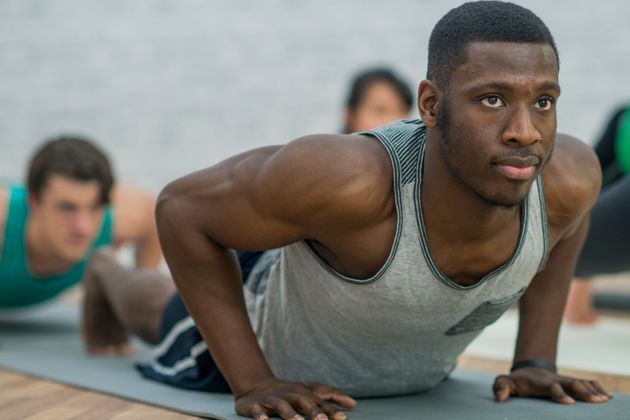
I’ve been squeezing, crunching, and hating my belly since I was eight and developed a trio of pink, doughy, and exercise-resistant rolls. Over the years I have cardio kick-boxed, skipped rope, and held planks for 90-seconds in group-fitness classes to the driving accompaniment of a Mary J. Blige track, yet the flab remained steadfast. Without questioning why, I’ve sought to forcefully shape my body into a socially acceptable form.
Popular media intensely promotes flat, toned, and six-pack sculpted bellies. In my totally unscientific study of Men’s Fitness, Men’s Health, and Women’s Health magazines, 30 out of 34 of their covers in the past year had some sort of reference to abdominals, six-packs, or gut-shredding. 18 of the cover models had visible abdominal muscles prominently displayed. Perhaps they should add an asterisk noting that to obtain visible abdominal muscles you have to starve your body fat down to below recommended levels for general health and wellbeing.
When it became apparent I needed a healthier relationship to my body, I found yoga. As a yoga teacher and hopefully functional adult I am trying my best to set aside quixotic body image quests. I don’t talk about six-packs in my yoga classes and trainings, but I do talk about core strength. I’m not the only yoga teacher with this fixation. Yoga Journal promoted some version of core strength or training on five of its nine covers in the past year. Every yoga studio I know is promoting some training or workshop focused on the core. I’m beginning to worry that even with the best intentions in mind, the yoga community is reinforcing negative social pressures to develop a strong, tight, and flat belly. We are signalling that something is wrong or deficient at your core and we have the answers on how you can fix it.
I thought I knew why core strength in yoga matters. I thought you could strengthen your core muscles to improve athletic performance of yoga postures, address or prevent back pain, and in no way whatsoever be concerned with getting ready for a bikini shot on the beach. But when I’ve tried to support these assumptions with the available exercise science, they fell apart or were revealed to be decidedly unimpressive. Research currently shows that core strength plays only a limited role in improved athletic performance, is not a demonstrable contributor to lower back pain prevention or treatment (as much as simply moving and exercising), and has been misunderstood and mistaught since a faulty Australian study in the mid-90’s. Yoga shapes require some mindfully utilised aspects of core musculature and structure to balance, move, and stabilise, but the heightened level of our core strength obsession might far exceed our actual need.
It’s time we face the flabby-rolled elephant in the room and change the paradigm with which we work, language, and promote core strength. Traditional yoga views the belly, or kumbha, as a centre of transformation. Emerging research into body awareness, or interoception, demonstrates the positive effect on overall health and wellbeing from simply learning to pay attention to neglected regions of the body. With this knowledge and inspiration, yoga can and should promote compassionate core awareness concurrent with flexibility and strength. From the inside-out, yoga can be a transformative method of reconciliation with our much maligned bellies. My teaching and practice is now guided by this mission.
When you get on your mat, or even at this very moment, bring your hands to touch, massage, or simply notice your core without judgment or a desire to change. Ensure your practice intention acknowledges that core is the deepest and most inextricable root of your physical self and is in dire need of care. Are you being kind to your centre? Develop subtle awareness to experience the waves of breath and mechanical forces passing through you with each posture and movement. When forces are too strong, learn to back off. As necessary, stretch your core or train small strength or functional patterns that contribute to better execution of postures and movements.
But, when a mean little voice tells you, “Alright, flabby, you need to be doing much much more at your core! Tighten! Flatten! Squeeze!”
Ask, “why?”